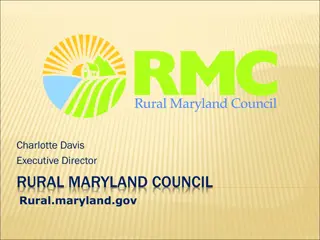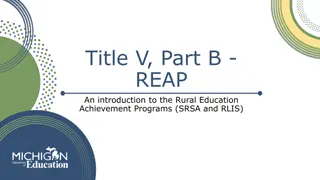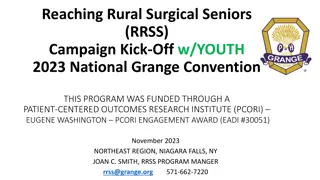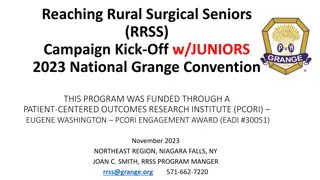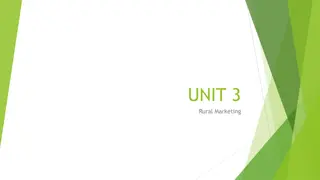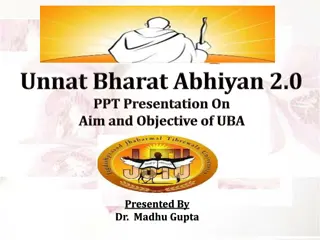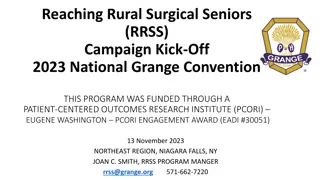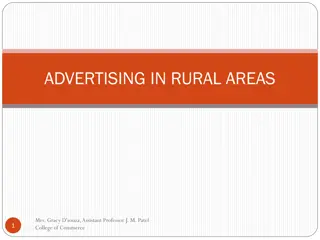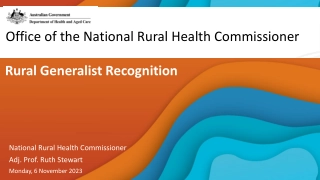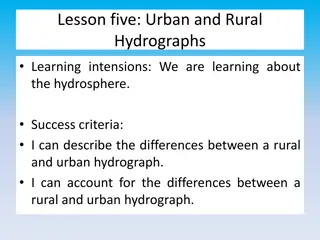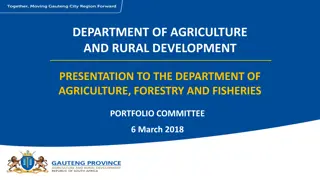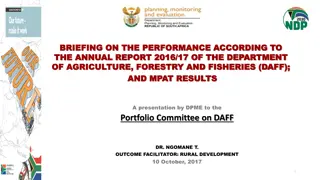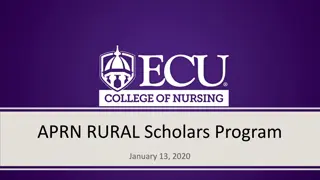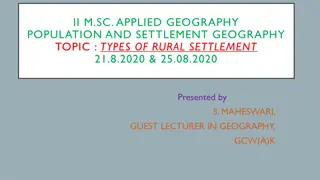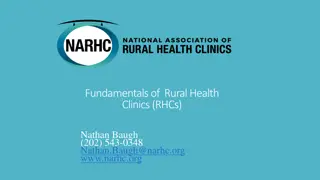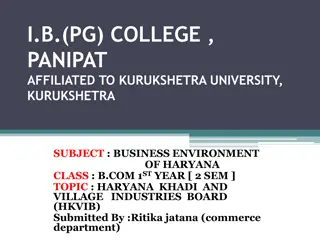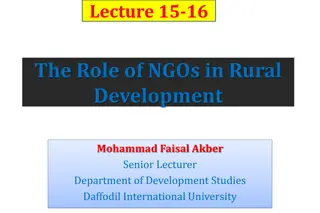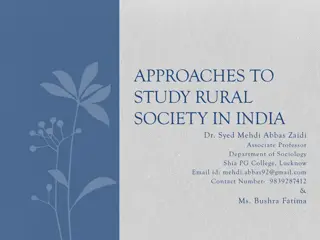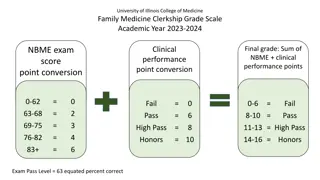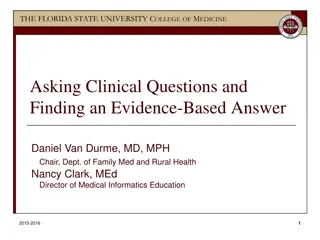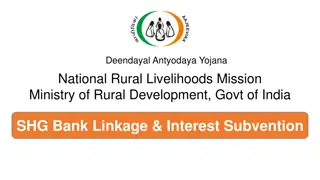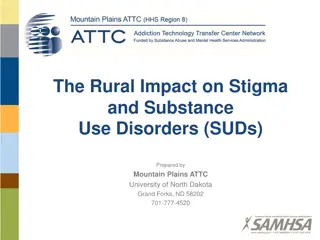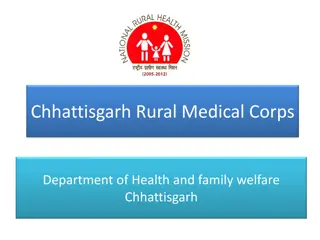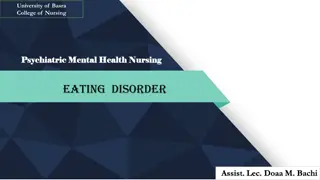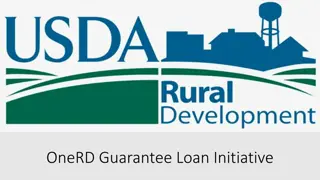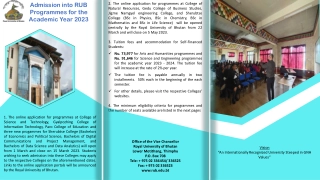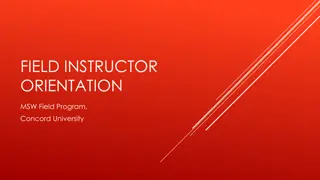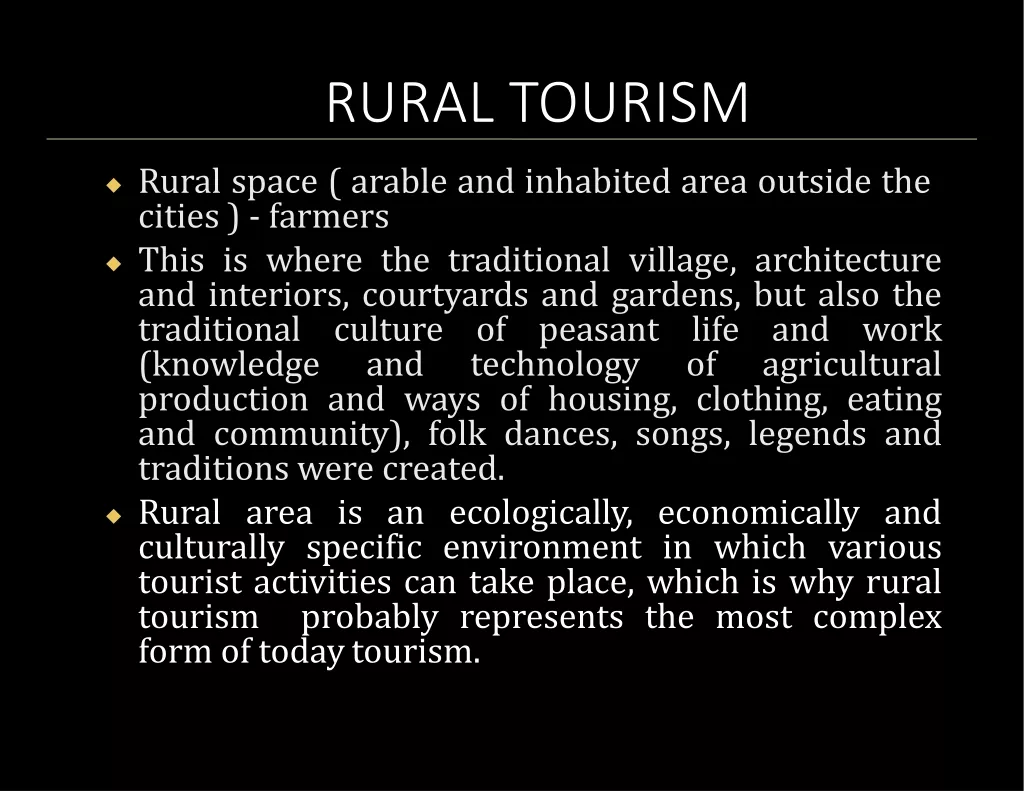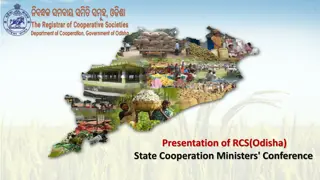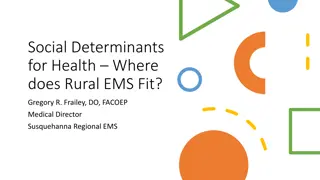Comprehensive Management of Snakebites in Rural Areas: University of Basra Al-Zahraa College of Medicine
Snakebites pose a significant health threat in rural areas, demanding urgent attention and proper management to prevent fatalities and disabilities. This educational program by University of Basra Al-Zahraa College of Medicine covers the symptoms, first-aid treatment, and administration of antivenom for snakebite victims to mitigate the burden of this problem.
Download Presentation

Please find below an Image/Link to download the presentation.
The content on the website is provided AS IS for your information and personal use only. It may not be sold, licensed, or shared on other websites without obtaining consent from the author. Download presentation by click this link. If you encounter any issues during the download, it is possible that the publisher has removed the file from their server.
E N D
Presentation Transcript
Ministry of higher Education and Scientific Research UNIVERSITY OF BASRA AL-ZAHRAA COLLEGE OF MEDICINE Management of snakebites By dr. Mohammed Adel Abdulhassan M.B.Ch.B F.B.M.C University of Basra Al-Zahraa college of medicine 24th of July 2023
Ministry of higher Education and Scientific Research UNIVERSITY OF BASRA AL-ZAHRAA COLLEGE OF MEDICINE Learning objectives: By the end of the lectures we should know: The symptoms and sign of snake bite How to deal with patients who were bitten. What s antivenom and when to give it. What do we do when antivenom is not available How to protect your self from snake bite
Ministry of higher Education and Scientific Research UNIVERSITY OF BASRA AL-ZAHRAA COLLEGE OF MEDICINE Burden of the problem: The venomous snake vary widely within and between countries. Widely distributed species are of major medical importance. Same species show geographical, intra-species variation in their venom composition. In many countries, snakebite is an important medical emergency and cause of hospital admission, demanding urgent attention by adequately trained medical staff. It results in the death or chronic disability of tens of thousands of active younger people, especially those involved in farming and plantation work.
Ministry of higher Education and Scientific Research UNIVERSITY OF BASRA AL-ZAHRAA COLLEGE OF MEDICINE Snakebite is predominantly a rural problem that has important implications for the nutrition and economy of the countries. The full burden of human suffering remains uncertain because of inadequate reporting in almost every part of the Region. To remedy this deficiency, it is strongly recommended that snakebite should be reported by the health care facility. Snake bite can be deadly if not treated appropriately and children are at great risk of suffering from complication due to small body surface area. Rapid administration of the proper antivenom can save life .
Ministry of higher Education and Scientific Research UNIVERSITY OF BASRA AL-ZAHRAA COLLEGE OF MEDICINE Steps in management of snake bite First-aid treatment Transport to hospital Rapid clinical assessment and resuscitation Detailed clinical assessment and species diagnosis Investigations/laboratory tests Antivenom treatment
Ministry of higher Education and Scientific Research UNIVERSITY OF BASRA AL-ZAHRAA COLLEGE OF MEDICINE Before we manage we need to know about symptoms and signs of snake bite
Ministry of higher Education and Scientific Research UNIVERSITY OF BASRA AL-ZAHRAA COLLEGE OF MEDICINE Signs and symptoms: In patients with suspected snakebite there may be 1-Puncture mark(s) only, caused by drybite from venomous snake, bite by non-venomous snake. 2-Local pain/swelling at bite site that may be transient, persistent or complicated by necrosis or infection leading to permanent disability. 3-Local and/or systemic envenoming affecting organs and tissues distant from bite site that may be transient, persistent, life-threatening or permanently debilitating(nausea, vomiting, malaise, drowsiness). Cardiovascular : chest pain, shortness of breath Neurological : paralysis, ptosis, respiratory muscle weakness Haematological : DIC.. Muscloskeletal: necrosis And any other system maybe effected abdominal pain, weakness,
Ministry of higher Education and Scientific Research UNIVERSITY OF BASRA AL-ZAHRAA COLLEGE OF MEDICINE 4-Signs of extreme anxiety prompted by the frightening experience: hyperventilation, acroparaesthesiae, tetany, dizziness/syncope, vasovagal shock, trembling that may mislead medical staff and lead to persistent psychological morbidity. 5-Effects of first-aid and other pre-hospital treatments such as pain, swelling and congestion from tight tourniquet and effects of herbal and other traditional remedies.
Ministry of higher Education and Scientific Research UNIVERSITY OF BASRA AL-ZAHRAA COLLEGE OF MEDICINE
Ministry of higher Education and Scientific Research UNIVERSITY OF BASRA AL-ZAHRAA COLLEGE OF MEDICINE What happened if you see someone who has got bitten ??? First aid : Rule no. one ( if you do know what to do than don t do harm). reassurance, immobilization of the whole patient, especially their bitten limb, accelerated. transport to medical care (summoned by emergency telephone helpline) ideally in recovery position. apply pressure-pad (simpler, more practicable than pressurebandage immobilization). Never use, recommend tight (arterial) tourniquets. Most of the familiar methods for first-aid treatment of snakebite, both western and traditional/herbal , have been found to result in more harm (risk) than good (benefit) and should be firmly discouraged.
Ministry of higher Education and Scientific Research UNIVERSITY OF BASRA AL-ZAHRAA COLLEGE OF MEDICINE Transport of the patient: The patient should be transported as one piece and we should avoid any unnecessary movement or posture of the bitten part to avoid unnecessary contraction of the muscle which may help in spreading of the venom and that would make the problem even worst.
Ministry of higher Education and Scientific Research UNIVERSITY OF BASRA AL-ZAHRAA COLLEGE OF MEDICINE If you get confused what to do ???? Remember medicine is : A ,B , C , D , E
Ministry of higher Education and Scientific Research UNIVERSITY OF BASRA AL-ZAHRAA COLLEGE OF MEDICINE Short and an easy history Where (in which part of your body) were you bitten? Point to the place. When were you bitten and what were you doing then?. Where is the snake that bit you? or What did it look like; did anyone take a picture?. How are you feeling now?.
Ministry of higher Education and Scientific Research UNIVERSITY OF BASRA AL-ZAHRAA COLLEGE OF MEDICINE Examination: Local examination. Systemic examination .
Ministry of higher Education and Scientific Research UNIVERSITY OF BASRA AL-ZAHRAA COLLEGE OF MEDICINE Species diagnosis: Expert identification of dead snake or a mobile phone photo image is useful. Otherwise, identification of species may be possible from the patient s description and circumstances of bite (e.g. nocturnal bite while sleeping on ground suggests krait) and clinical syndrome.
Ministry of higher Education and Scientific Research UNIVERSITY OF BASRA AL-ZAHRAA COLLEGE OF MEDICINE
Ministry of higher Education and Scientific Research UNIVERSITY OF BASRA AL-ZAHRAA COLLEGE OF MEDICINE Invesatigations/laboratory tests: 20 minute whole blood clotting test (20WBCT) is a simple, informative bedside test requiring only a new, clean, dry, ordinary glass tube, bottle, vial or syringe. Positive (non-clotting) result indicates severe consumption coagulopathy and need for immediate antivenom treatment. False positive (non-clotting) 20WBCT results from use of plastic, polystyrene or polypropylene rather than ordinary glass, or glass cleaned with detergent, soap or washing fluid that destroy surfaceactivation of blood coagulation.
Ministry of higher Education and Scientific Research UNIVERSITY OF BASRA AL-ZAHRAA COLLEGE OF MEDICINE
Ministry of higher Education and Scientific Research UNIVERSITY OF BASRA AL-ZAHRAA COLLEGE OF MEDICINE Other more sensitive laboratory tests of blood coagulation: International Normalized Ratio (INR) based on prothrombin time (PT) (> or =1.2 is abnormal), activated partial thromboplastin time (aPPT), fibrin(ogen) related antigens (fibrin degradation products -FDP) or D-dimer. CBC. Renal function test. Urine test. Liver function test. Other according to the patient s condition .
Ministry of higher Education and Scientific Research UNIVERSITY OF BASRA AL-ZAHRAA COLLEGE OF MEDICINE Antivenom treatment Antivenom(antivenin, anti- snakebite serum, ASV etc.) is the only specific GUIDELINES FOR THE MANAGEMENT OF SNAKEBITES A most important decision in managing snakebite victims is whether or not they need antivenom. It is immunoglobulin purified from plasma of horses or sheep hyperimmunised with venoms of one (to make monospecific antivenom) or more (to make poly-specific antivenom) snake species, medically the most important species in a particular geographical area. Paraspecific neutralization of venoms of closely related species is possible but not certain.
Ministry of higher Education and Scientific Research UNIVERSITY OF BASRA AL-ZAHRAA COLLEGE OF MEDICINE Anti venom is indicated when patients with proven/ suspected snakebite develop one or more of the following signs: Systemic envenoming: Haemostatic abnormalities [spontaneous systemic bleeding, coagulopathy (+ve non-clotting 20WBCT, INR >1.2, or prothrombin time >4-5 seconds longer than control) or thrombocytopenia. Neurotoxicity (bilateral ptosis, external ophthalmoplegia, paralysis etc.). cardiovascular abnormalities (hypotension, shock, cardiac arrhythmia, abnormal ECG). Acute kidney injury (oliguria/anuria, rising blood creatinine/ urea). Haemoglobin- /myoglobin-uria (dark brown/black urine, +ve urine dipsticks, other evidence of intravascular haemolysis/generalized rhabdomyolysis).
Ministry of higher Education and Scientific Research UNIVERSITY OF BASRA AL-ZAHRAA COLLEGE OF MEDICINE Local envenoming: Local swelling involving more than half bitten limb (in absence of tourniquet) within 48 hr of the bite. Swelling after bites on digits. Rapid extension of swelling beyond wrist/ankle within few hours of bites on hand/foot). Enlarged tender lymph node draining bitten limb.
Ministry of higher Education and Scientific Research UNIVERSITY OF BASRA AL-ZAHRAA COLLEGE OF MEDICINE Common problem with antivenom: 1- anaphylaxis ( take care when you administer) 2- delayed immunological reaction 3- pyrogenic reaction (Follow up is necessary)
Ministry of higher Education and Scientific Research UNIVERSITY OF BASRA AL-ZAHRAA COLLEGE OF MEDICINE When no appropriate antivenom is available, patients must be treated conservatively : Respiratory paralysis: try anticholinesterases, but without delaying assisted ventilation. Haemostatic abnormalities: rest in bed to avoid trauma, transfuse cryoprecipitate, fresh frozen plasma, fresh whole blood and platelets. Shock, myocardial damage: correct hypovolaemia and consider vasopressor drugs. In hypotension with bradycardia, try atropine. Acute kidney injury: conservative treatment or renal replacement therapy. Rhabdomyolysis: correct hypovolaemia with intravenous fluid, acidosis with sodium bicarbonate.
Ministry of higher Education and Scientific Research UNIVERSITY OF BASRA AL-ZAHRAA COLLEGE OF MEDICINE Treatment of the bitten part: Wound management Bacterial infections Compartmental syndromes and fasciotomy
Ministry of higher Education and Scientific Research UNIVERSITY OF BASRA AL-ZAHRAA COLLEGE OF MEDICINE Prevention Simple tips in prevention of snake bite: 1. Wear boots and long pants when hiking to help block rattlesnake venom. 2. Stay on trails when hiking, away from underbrush and tall weeds. 3. Do not touch or disturb a snake, even if it appears dead. 4. Always look for concealed snakes before picking up rocks, sticks or firewood 5. Never hike alone in remote areas. Always have someone with you who can assist in an emergency. 6. Teach children to respect snakes and to leave them alone.
Ministry of higher Education and Scientific Research UNIVERSITY OF BASRA AL-ZAHRAA COLLEGE OF MEDICINE Thank you
Ministry of higher Education and Scientific Research UNIVERSITY OF BASRA AL-ZAHRAA COLLEGE OF MEDICINE Reference: Regional Office for South-East Asia, World Health Organization. (2016). Guidelines for the management of snakebites, 2nd ed. WHO Regional Office for South-East Asia. https://apps.who.int/iris/handle/10665/249547 Warrell DA. Snakebite. Lancet 2010 Jan 2; 375(9708): 77-88. Sharma SK, Chappuis F, Jha N, Bovier PA, Loutan L, Koirala S. Impact of snakebites and determinants of fatal outcomes in southeastern Nepal. Am J Trop Med Hyg. 2004 Aug;71(2):234-8.





